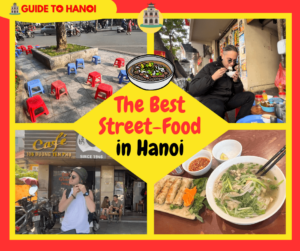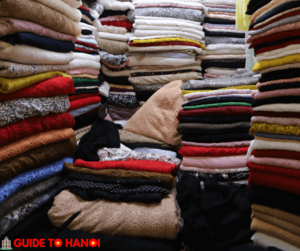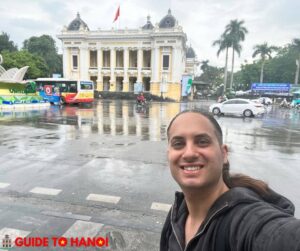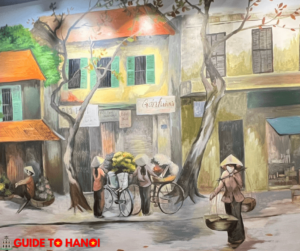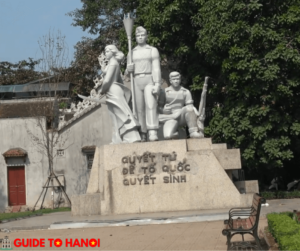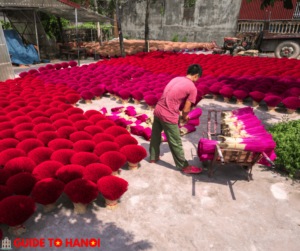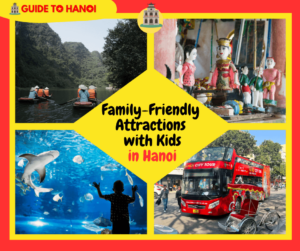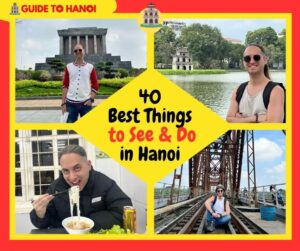Hanoi, the capital of Vietnam, is a popular tourist destination, and it’s always helpful to know about the language and communication options there.
The official language of Vietnam is Vietnamese. While Vietnamese is the dominant language spoken by the local population, you’ll find that many people in Hanoi, especially those in the service industry, government offices, and younger generations, have at least some knowledge of English.
English is commonly taught in schools and is becoming more widely spoken in major cities like Hanoi due to the growth of tourism and international business.
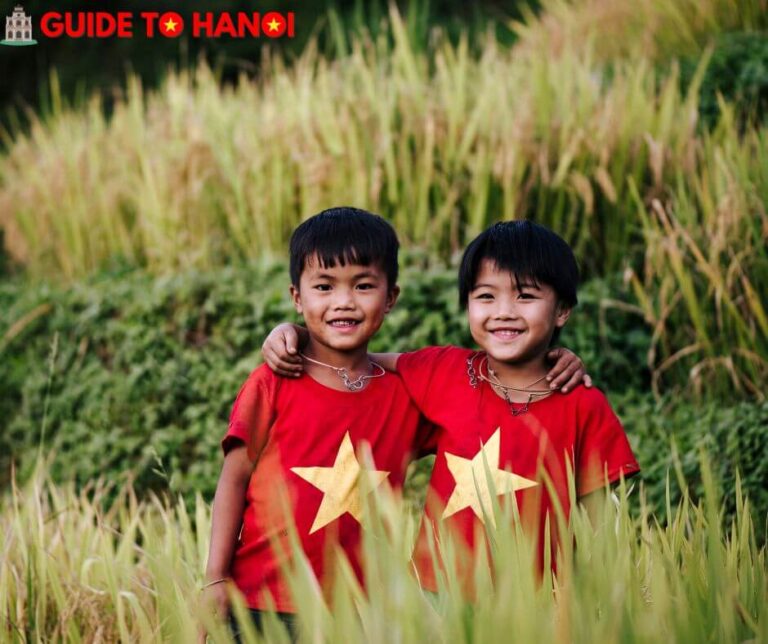
Here are some things to keep in mind about communication in Hanoi:
English Proficiency
While English proficiency varies among individuals, you’ll often find that hotel staff, tour guides, and employees in tourist areas can communicate in basic to intermediate English.
They can help you with everyday tourist needs.
Language Barriers
Outside of tourist areas and among the older generation, English proficiency may be limited. In these cases, it can be helpful to have some basic Vietnamese phrases or a translation app on hand to aid in communication.
Learn Basic Phrases
Learning a few basic Vietnamese phrases like “hello” (Xin chào), “thank you” (cảm ơn), and “goodbye” (tạm biệt) can go a long way in showing respect and making your interactions smoother.
| English | Vietnamese | Pronunciation |
|---|---|---|
| Hello | Xin chào | Sin chow |
| Good morning | Chào buổi sáng | Chao bwowee sahng |
| Good afternoon | Chào buổi chiều | Chao bwowee chyoo |
| Good evening | Chào buổi tối | Chao bwowee toy |
| Goodbye | Tạm biệt | Tahm byet |
| Thank you | Cảm ơn | Kahm uhn |
| Yes | Có | Koh |
| No | Không | Khome |
| Please | Làm ơn | Lam uhn |
| Excuse me | Xin lỗi | Sin loy |
| How much is this? | Bao nhiêu tiền? | Bow nyoo tee-ehn? |
| I don’t understand | Tôi không hiểu | Toy khom hew |
| What is this? | Đây là gì? | Dai lah yee? |
| Water | Nước | Nook |
| Food | Đồ ăn | Duh uhn |
| Help | Giúp đỡ | Yoop duh |
| Bathroom | Phòng vệ sinh | Fong veh sing |
| I need a taxi | Tôi cần một xe taxi | Toy kun moot seh taxi |
| Where is…? | …ở đâu? | …uh dao? |
| I’m lost | Tôi bị lạc đường | Toy bee latz doong |
Translation Apps
Consider using translation apps on your smartphone, like Google Translate or local apps designed for English-Vietnamese translations.
These can help bridge the language gap.
Signage
In major tourist areas, you’ll often find signs and menus with English translations, making it easier for travelers to navigate and order food.
Patience and Gestures
If you encounter language barriers, don’t be discouraged.
People in Hanoi are generally friendly and understanding. You can use gestures and simple drawings to convey your message.
Guided Tours
If you want a more seamless experience, consider booking guided tours or hiring local guides who are fluent in English.
They can provide in-depth insights into the city and its culture.
Overall, while English is not as widely spoken as in some other tourist destinations, you should be able to get by in Hanoi with a combination of English, basic Vietnamese phrases, and a bit of patience.
The locals are usually accommodating and appreciate your effort to communicate in their language.
What are the top 3 languages spoken in Vietnam?
Vietnam is a linguistically diverse country, but the top three languages spoken in Vietnam are:
Vietnamese
Vietnamese is the official language of Vietnam and is spoken by most of the population.
It is the most widely spoken language in the country and is used for government, education, media, and day-to-day communication.
Tay
The Tay language is spoken by the Tay ethnic group, which is one of the most significant ethnic minorities in Vietnam.
The Tay people primarily inhabit the northern mountainous regions.
Khmer
The Khmer language is spoken by the Khmer ethnic group, primarily in the Mekong Delta region of southern Vietnam.
Some communities also speak Khmer in the southwest of the country.
While Vietnamese is the dominant language and the most widely spoken, Vietnam’s linguistic diversity includes various minority languages and dialects spoken by different ethnic groups throughout the country.
There’s more!
French and Chinese have historical significance in Vietnam, and different ethnic groups speak various Highlander languages.
Here’s more information on each:
French
French was the colonial language of Vietnam during French Indochina, which lasted from the mid-19th century to 1954.
While it is no longer an official language or widely spoken, there are still some older generations in Vietnam who may have a basic knowledge of French.
Additionally, you may find some street signs and historical documents with French influences.
Chinese
While not an official language of Vietnam, Chinese is spoken by some members of the Chinese ethnic minority in Vietnam.
It is more commonly used by the Hoa people, who are ethnically Chinese and live in various parts of the country.
Mandarin and Cantonese are among the Chinese dialects spoken by these communities.
Highlander Languages
Vietnam is home to a variety of ethnic minority groups, particularly in the mountainous regions of the north and central highlands.
These ethnic minority groups often have their languages and dialects. Some of the prominent Highlander languages and ethnic groups include:
- H’mong:
The H’mong people have their language, part of the Hmong-Mien language family.
- Montagnard:
The Montagnard people, also known as the Degar, have their languages, which belong to different language families.
- Jarai, Ede, Bahnar:
These are examples of languages spoken by various Montagnard communities in the central highlands of Vietnam.
These Highlander languages are pretty diverse, and there are many different languages and dialects within these ethnic groups.
Vietnamese is typically used for communication between different ethnic groups and with the government.
Still, many people within these communities may be bilingual or multilingual, speaking both their Highlander languages and Vietnamese.
While French and Chinese have historical and cultural significance, Vietnamese remains the dominant and official language of the country, and it is the primary language of communication for most Vietnamese people.
Do people speak English in Hanoi?
In Hanoi, many people, especially in the service industry and tourism sector, have basic to intermediate English skills to assist tourists.
What are the 2 languages spoken in Vietnam?
The two most widely spoken languages in Vietnam are Vietnamese and Tay, with many minority languages.
What language is spoken in Hanoi and Ho Chi Minh City?
The primary language spoken in both Hanoi and Ho Chi Minh City is Vietnamese, though English is increasingly used in these major cities.
How common is English in Vietnam?
English is becoming more common in Vietnam, especially in urban areas and among younger generations, due to tourism and international influences.
Do most people in Vietnam know English?
No, most people in Vietnam do not know English fluently.
However, basic English phrases and communication skills are becoming more widespread, particularly in urban areas.
In conclusion
Vietnam is a diverse and vibrant country with a rich linguistic landscape.
While Vietnamese is the dominant language, you may encounter various languages and dialects throughout the country, particularly in rural areas.
English is becoming more prevalent, but it is not widely spoken outside major cities and tourist areas.
Learning some basic Vietnamese phrases can be handy when traveling to Vietnam, but don’t be afraid to use gestures or hire a local guide for a smoother experience.
So whether you’re visiting Hanoi for its bustling street markets or Ho Chi Minh City for its historical landmarks, embrace the linguistic diversity of Vietnam and enjoy your travels!



